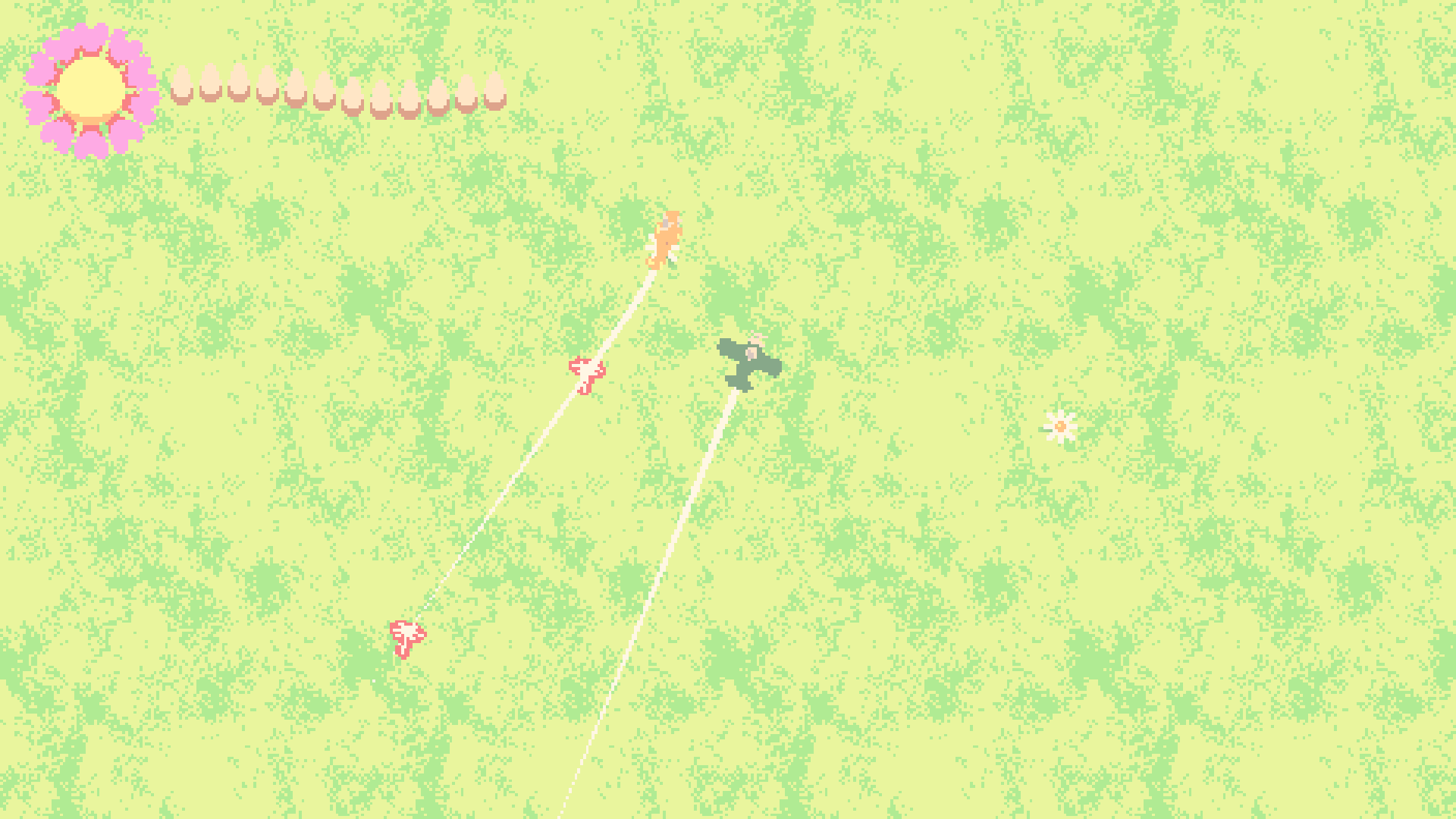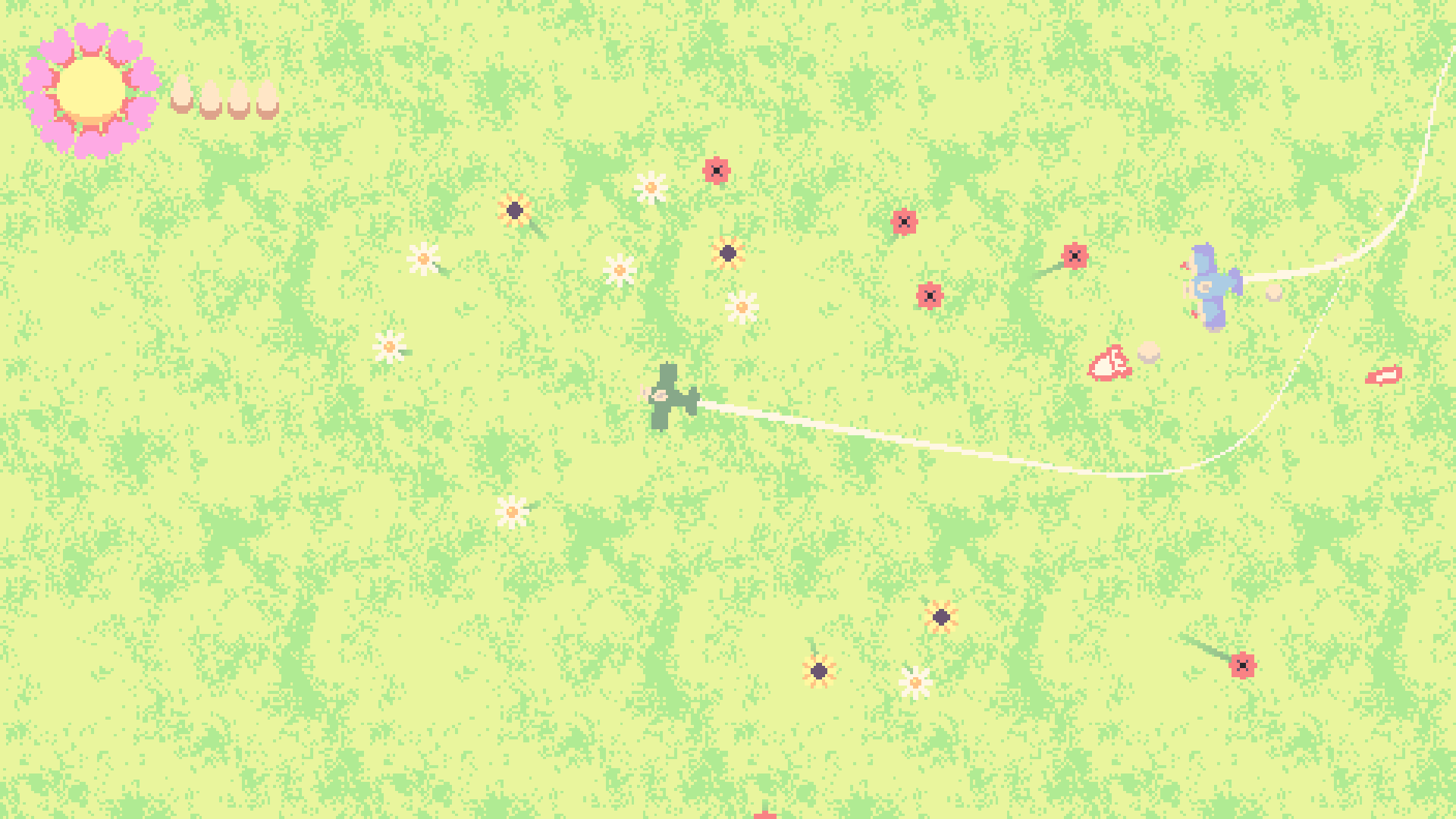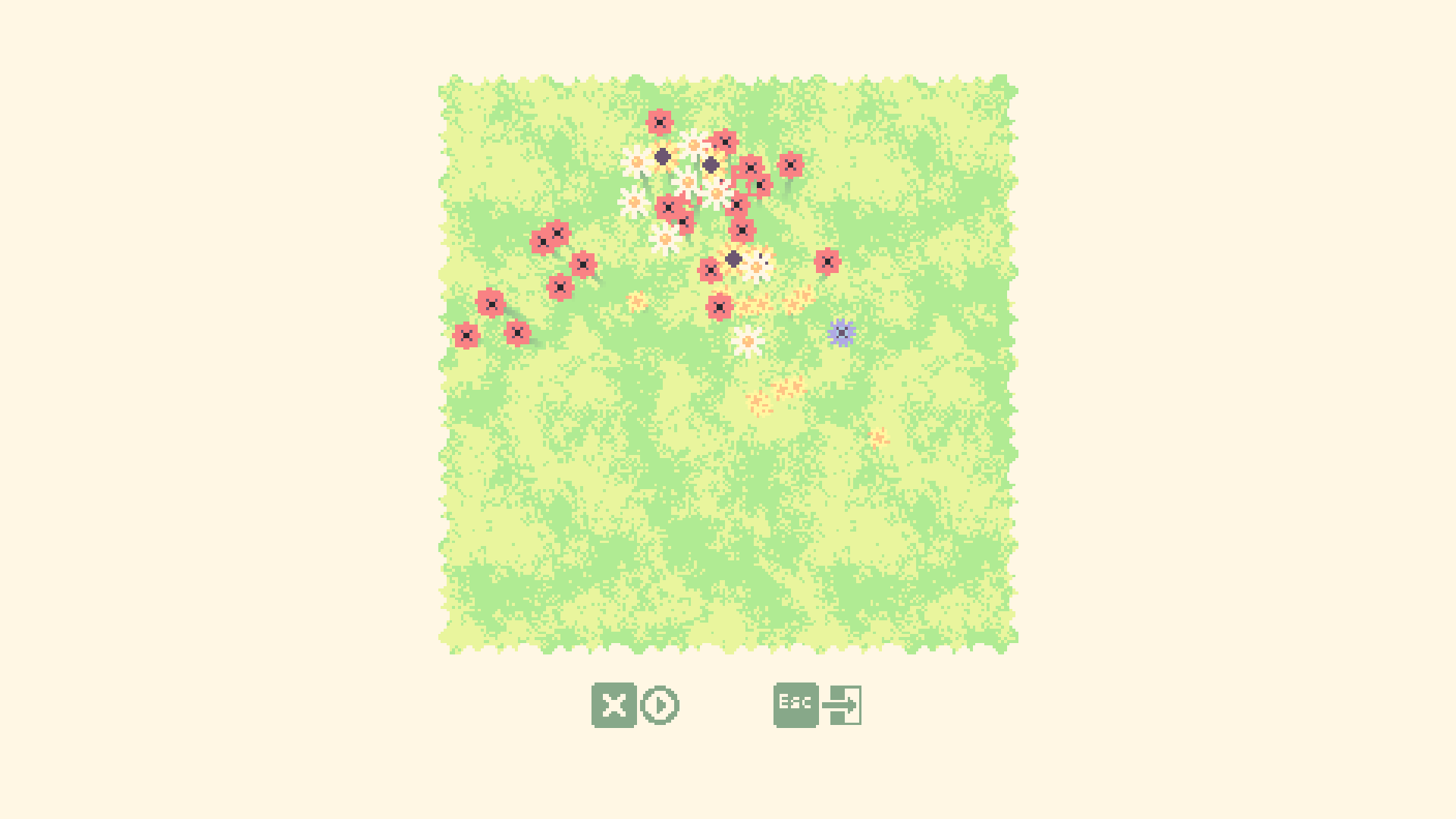Petal Pilot (2020)Solo Project
As a solo project, my responsibilities were wide-reaching. I designed the game from prototype to completion, wrote all of the code (including AI), produced all of the artwork, and did my own sound design using Creative Commons resources.
Platforms: PC
Project Length: ~4 weeks
Role: Solo Project
Software: Gamemaker Studio 2, Aseprite
Link: Coming soon!

Petal Pilot's weapons are shared both by the player and by enemies, making adjusting their strength a tricky balancing act. Weapons need to feel powerful enough to be worth using by the player, but not so powerful that they are frustrating to play against. What makes an interesting weapon does not necessarily make an interesting enemy, and vice versa. One factor used to balance weapons is variable clip sizes and recharge times; because enemies fire much less frequently than the player, limited ammunition matters less to them, making it a good way to tweak the feel of each tool in the player's arsenal without significantly affecting the difficulty of enemies.

As a game of Petal Pilot progresses, flowers sprout where enemies are destroyed, the type of flower reflecting the weapon the player used. The players' actions in the game gradually change the landscape, which serves as a diagetic indicator of the player's progress as well as a means of orienting the player character on what in otherwise an empty play area.

Because the game is endless, some sort of scoring mechanism is nessesary for the player's performance to be meaningful. However, a traditional point tally is somewhat at odds with the game's laid-back tone. Instead, it felt more natural for the player's performance to be represented by the flowers they grew over the course of the game. On the "garden" screen, the player can see a miniaturized version of the entire play area and every flower they grew.